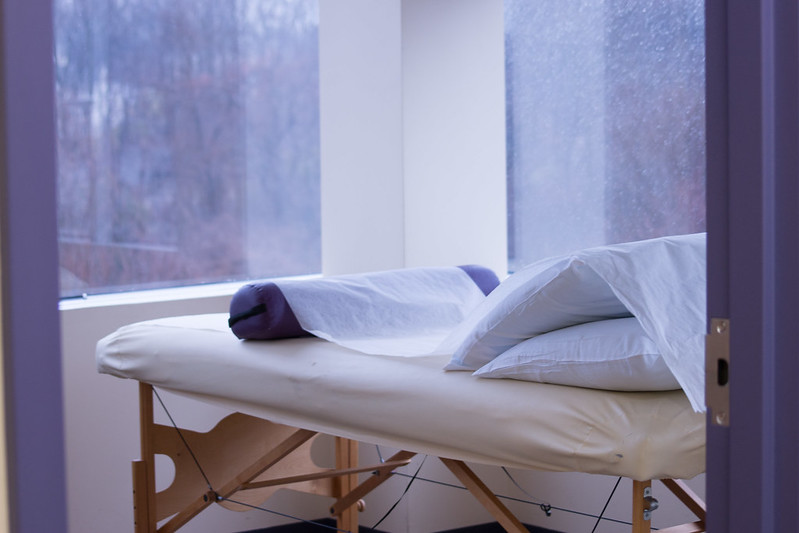
Written by Missy Steger, LMT
How Does TMJ Develop?
The most common cause of Temporomandibular joint dysfunction (TMJ) pain is from grinding and clenching the teeth. This occurs mostly when sleeping or during stressful moments in the day. Other causes can be from arthritis, overuse, injury, and structural issues. One of the most popular treatments is a mouth guard from the dentist that protects the enamel of your teeth. With constant grinding and clenching, the tooth itself can wear quickly leading to tooth loss and nerve damage. As for clenching our teeth when stressed, our brain gets a feeling of satisfaction from feeling the two layers of teeth together. This is a self-soothing behavior that unfortunately damages our teeth. The mouth guard places a layer of material between the teeth so that brain cannot get that stress relief it is looking for. Over time, our brain will find another outlet. Other forms of treatment may involve antidepressants, physical therapy, anti-inflammatories or anti-depressants. (Dimitroulis, 2018)
Symptoms of TMJ
If you suffer from this, you know about the headaches, neck pain, and loss of function. TMJ Syndrome effects muscles of the skull and neck such as the temporalis, masseters, pterygoid group, sternocleidomastoid, scalene, splenius group and the occipitals. The referral pain from these muscles can lead to various types of headaches, neck pain, muscle stiffness, clicking and popping of the jaw, tinnitus (ear ringing), mock sinus infections, dizziness, and blurred vision. (National Institute of Dental and Craniofacial Research).
How Massage Helps
As a licensed massage therapist, I will work with the muscles related to the jaw from multiple angles to address the pain and dysfunction from the tight muscles related to the temporomandibular joint. I may even put on gloves and go inside the mouth to address tight bands of fiber and trigger points in the smaller muscles directly related to the movement of the jaw. This 30–60-minute massage may also entail working on local muscles of the face and scalp, as well as the neck and shoulders to address all associated musculature and referral pain patterns. (Flagg, 2009). Massage can also support various treatments by communicating with your medical team for an integrative approach. In my treatment room I treat the patient, not just the symptom, so each appointment will begin with a thorough intake to provide an individualized treatment plan.
I Feel Your Pain
Patients are always asking me “Can you feel it?”. My answer is usually “If you are feeling it, so am I”. This is because I feel with my hands, and then react to what is under them and what a patient’s body is communicating from a particular technique. In this case, I also have a particular empathy as I understand what this type of pain syndrome feels like. Not only am I prone to clenching and have been wearing a mouth guard for years, but I also suffered from a traumatic injury to the jaw dislocating it from the joint. Being a patient myself, I have a deeper compassion and understanding as I work with those seeking relief.
Natural Care Center (NCC)
Looking to see a Massage Therapist at the Natural Care Center? Therapeutic or medical massage employs a variety of modalities in order to address underlying conditions, injuries, pain, or stress. Techniques such as lymphatic drainage, shiatsu, deep tissue, and other focused treatments are used to achieve specific goals set by the patient and massage therapist.
During your first visit at the NCC, your massage therapist will review relevant information and formulate massage sessions that target to your specific needs. To talk with someone about making an appointment, call 443-906-5794 or email .
References
Dimitroulis, G. Management of temporomandibular joint disorders: A surgeon’s perspective. (https://onlinelibrary.wiley.com/doi/full/10.1111/adj.12593) Australian Dental Journal. 2018;63 Suppl 1:S79-S90.
National Institute of Dental and Craniofacial Research. TMJ (Temporomandibular Joint & Muscle Disorders. (https://www.nidcr.nih.gov/health-info/tmj) Accessed 4/23/22.
Flagg, Retta. (2009). Massage for TMJ Syndrome (live).